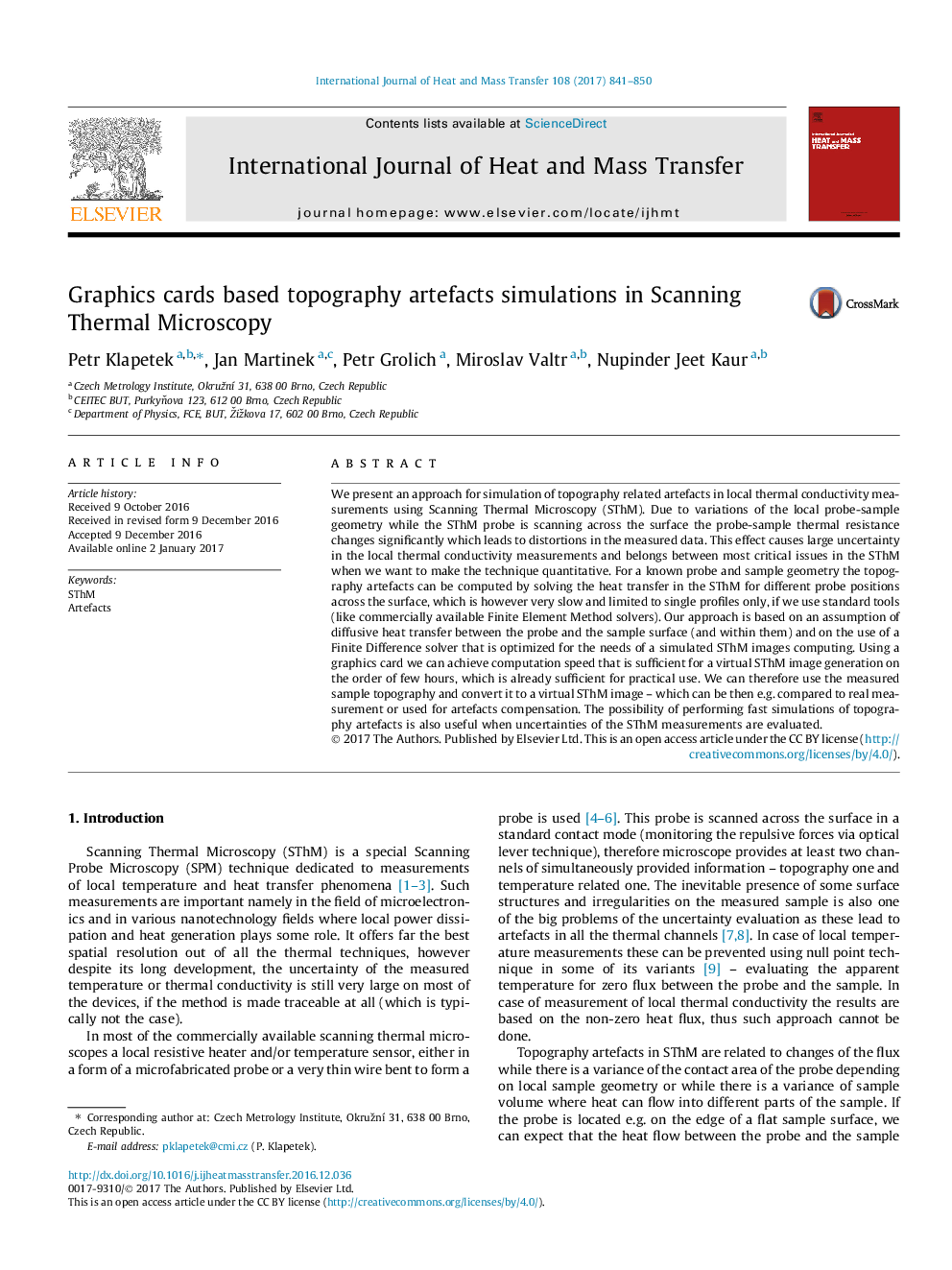| کد مقاله | کد نشریه | سال انتشار | مقاله انگلیسی | نسخه تمام متن |
|---|---|---|---|---|
| 4994324 | 1458034 | 2017 | 10 صفحه PDF | دانلود رایگان |
- Paper presents a methodology and associated computational tool for fast simulations of whole Scanning Thermal Microscopy images, aiming to bridge the gap between the probe-sample interaction simulations and experiments in SThM.
- Pixel-by-pixel simulations of SThM images are suitable for advanced analysis of sample thermal properties and for topography artefacts simulations.
- By use of graphics card and a simple Finite Difference scheme we are able to reduce time necessary for complete virtual SThM image simulation to few hours, which is necessary prerequisite for practical use of such numerical analysis in routine data analysis.
We present an approach for simulation of topography related artefacts in local thermal conductivity measurements using Scanning Thermal Microscopy (SThM). Due to variations of the local probe-sample geometry while the SThM probe is scanning across the surface the probe-sample thermal resistance changes significantly which leads to distortions in the measured data. This effect causes large uncertainty in the local thermal conductivity measurements and belongs between most critical issues in the SThM when we want to make the technique quantitative. For a known probe and sample geometry the topography artefacts can be computed by solving the heat transfer in the SThM for different probe positions across the surface, which is however very slow and limited to single profiles only, if we use standard tools (like commercially available Finite Element Method solvers). Our approach is based on an assumption of diffusive heat transfer between the probe and the sample surface (and within them) and on the use of a Finite Difference solver that is optimized for the needs of a simulated SThM images computing. Using a graphics card we can achieve computation speed that is sufficient for a virtual SThM image generation on the order of few hours, which is already sufficient for practical use. We can therefore use the measured sample topography and convert it to a virtual SThM image - which can be then e.g. compared to real measurement or used for artefacts compensation. The possibility of performing fast simulations of topography artefacts is also useful when uncertainties of the SThM measurements are evaluated.
Journal: International Journal of Heat and Mass Transfer - Volume 108, Part A, May 2017, Pages 841-850
